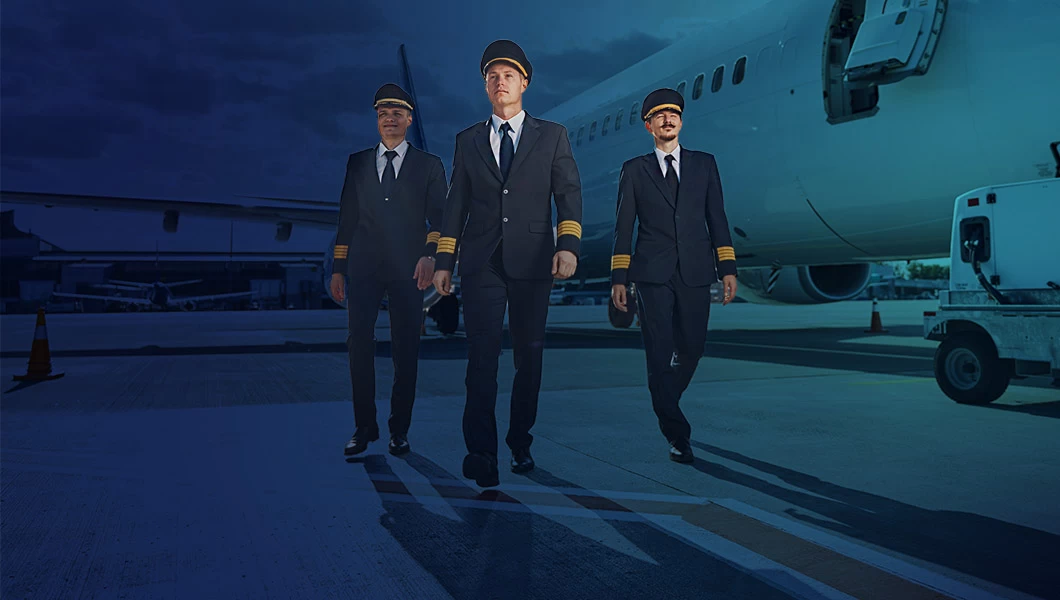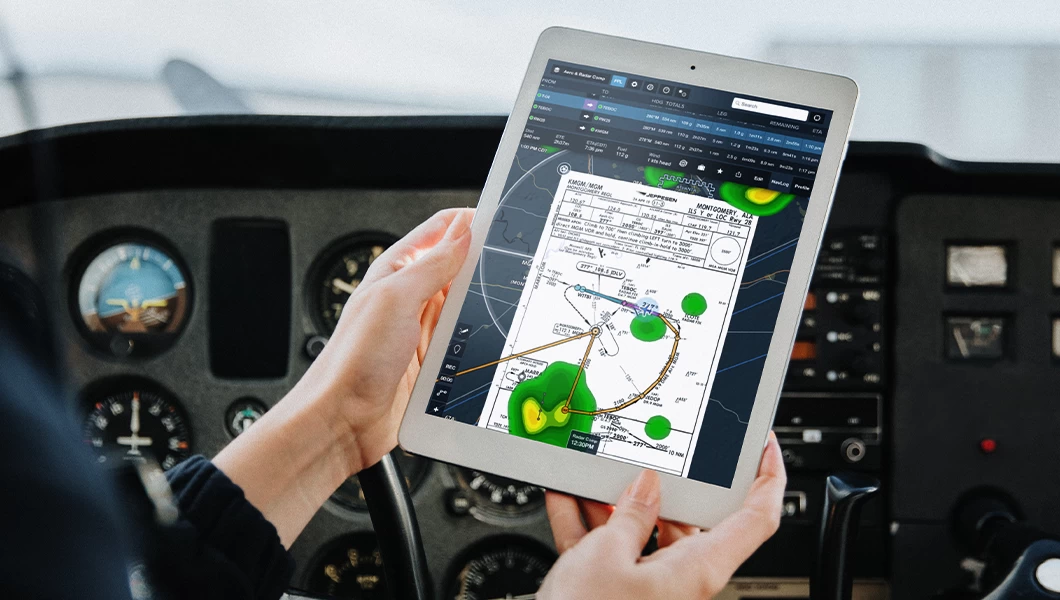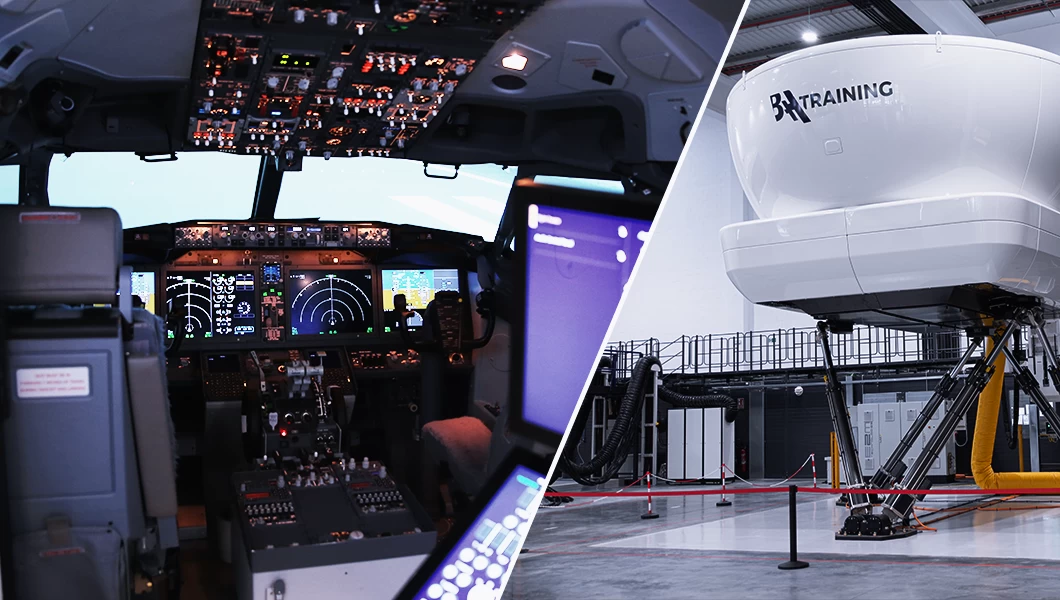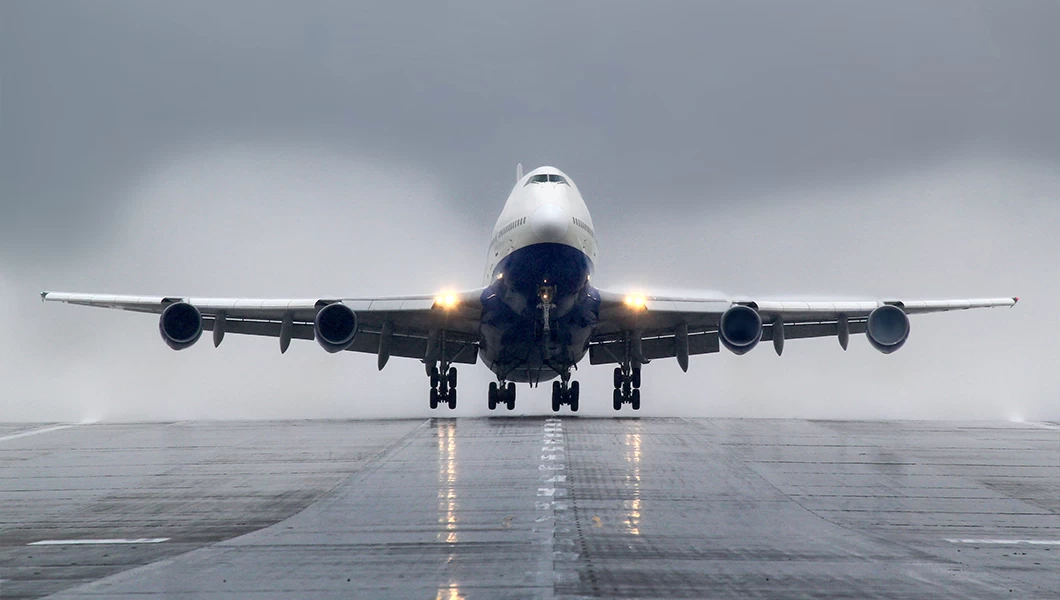ATC communications can be considered a form of art in its own regard. It might come as a surprise, but pilots need to have excellent communication skills, as well as interpersonal skills, among other proficiencies required in this line of work (you can read more about it in our article on the importance of Crew Resource Management).
Communications with ATC begin the moment the aircraft engine starts and continue until the plane is parked at the gate at the flight destination. Pilots communicate with different air traffic controllers at certain stages of the flight, most notably when crossing airspaces and countries. While student pilots don’t start communicating with ATC until their flight school training, most are excited about it and, at the same time, dreading it—the idea of communicating in a one-of-a-kind lingo in busy airspace can definitely raise stress levels for beginners.
Before we take a closer look at the nuts and bolts of it all, let’s start at the beginning by understanding what ATC is, what ATC communications are, and how big of a role it plays.
What is air traffic control?
Air traffic control—more commonly abbreviated as ATC—is where the whirlwind of action happens daily. The air traffic controllers oversee aircraft movements on the ground and in the airspace, ensuring smooth, efficient, and, most importantly, safe air traffic flow at smaller airports and aviation hubs.

ATC’s primary means of communication with incoming, outgoing, and passing aircraft is radio. Controllers issue clearances and instructions to ensure distinct separation within the traffic—enough spacing between all the aircraft on the ground and in the airspace to avoid serious incidents. This helps them maintain properly moving air traffic flow.
There are three main types of air traffic controllers that pilots communicate with:
- Tower Controller. Provides air traffic control assistance within and around an aerodrome.
- Approach Controller. Provides air traffic control for departing and arriving flights, acting as a link between the tower controllers and the area controllers.
- Area Controller (En-Route Controller). Serves the flights during the cruise phase, when the aircraft levels off after a climb until it begins to descend for landing.
Communications with the controllers are conducted in English, the ICAO-established lingua franca of aviation. So, the challenge for the pilot is twofold: to have a good comprehension of the English language (both listening and speaking skills) to ensure clear communication and to pay close attention when communicating by radio since static or unexpected interruptions might happen.
While it’s fun to try and decipher what your pilot is saying on the intercom system during your flight, the pilot-ATC communication has to be clear, brief, and uninterrupted.
How to prepare for communication with ATCs?
The first thing to know is that this unique language of aviation has to be memorized by heart and practiced. Only then will you be able to keep up with what’s happening around you, fully understand it and get familiar with your future working environment—and language.
Aviation Alpha, Bravo, Charlies (ABCs)
A very good place to start is the ICAO Radiotelephony Alphabet (also referred to as the NATO Spelling Alphabet or simply phonetic alphabet). This is the absolute bread and butter, so to speak, of aviation communication. It is most commonly used in the transmission of aircraft identification, called callsigns. Callsigns are a group of alphanumeric characters used to identify an aircraft in air-ground communications, for example, EZS91UQ. There are certain rules for how callsigns are created and it can differ not only between regions but also countries. The full callsign has to be used when establishing communications. You can find the ICAO Alphabet and more about it here.
Numbers, too, slightly differ from the traditional way we’re used to saying them. The aviation number pronunciation is based on the same ICAO phonetic alphabet, and while it’s not as drastic of a change as for the letters, there are a few exceptions.

So, if the ATC instructs EZS91UQ to change frequencies to 126.4 MHz, it would be transmitted as “Echo-Zulu-Sierra-niner-wun-Uniform-Quebec, contact Blackpool Tower wun too six day-see-mal fow-er.”
Note that different regions (USA versus Europe, for example) and countries also vary in how they pronounce numbers. The rule of thumb is to stick to the ICAO-approved material.
Similar ARTICLES
An easy way to keep in top form with your phonetic alphabet and numerals is to practice pronouncing car registration numbers you see during your commute. A car registration plate 307RTB would be pronounced as “tree ze-ro seven Romeo-Tango-Bravo.“
Apart from the phonetic alphabet, students must also memorize a very long list of aviation phraseology used in everyday communication. The list, provided in alphabetical order, contains hundreds of phrases and terms and is the unavoidable groundwork a pilot simply must lay down. But fear not. Once the hard work is done, it will become second nature to you.
However, completely error-free communication is slightly unrealistic in real life. Many factors, both internal and external, may cause miscommunication and misunderstanding. The important thing is to keep calm and work it out. Something that aids strongly in such situations are the pilot’s ability to adapt, and their language competency, so keeping your English skills sharp will only benefit you in the long run.
Keeping communication clear
Pilot manuals and materials stress five key points for smooth radio communications:
Your PILOT CAREER
starts with a first click
- Use only the English language—this one is pretty self-explanatory; after all, English is the international language of aviation;
- Use standard phraseology—whenever possible, use the universally used abbreviations, terms, and phrases;
- Be concise and clear—don’t embellish your communications with lengthy sentences and ambiguous words, just like this sentence, for example;
- Avoid inflections—the tonality of your voice, especially when asking questions (when your voice raises in pitch), might not be understood as well through the radio, so it’s better to use interrogative (questioning) words or phrases, like ‘confirm’;
- Keep politeness to a minimum—don’t overdo it with niceness, as it can become a hindrance to keeping the communication concise and clear, but note that in some cases, words like ‘please’ or ‘do you mind if’ could be part of the interrogative phrases.
A great way to see how all of this works together in tandem is to listen to live ATC online. You can choose the airport (or airstrip) that is closest to your heart or intrigues you the most and see how the conversations between experienced pilots and air traffic controllers play out.
Where to find radio equipment in aircraft?
Now that you’re a bit more familiar with the topic and can’t wait to see yourself in the cockpit of an aircraft, ready to show off those ATC communication skills, you might wonder where this communications equipment is found in an aircraft.
BAA Training’s Ab Initio students get their first flight experience in a Cessna 172 Skyhawk single-engine aircraft equipped with a Garmin G1000 glass cockpit at the Lleida-Alguaire International Airport, where the flight school is located. Counting its 20th year in the industry, the G1000 has been regarded as one of the most popular integrated glass cockpit solutions for general aviation and business aircraft.
Since it incorporates GPS, communication, and radio navigation components directly within the system, it effectively centralizes these elements into one location.

Radio communications are located at the top right of the PFD (Primary Flight Display) screen and the audio panel between the two LCD screens. The top right displays the communication channels’ COM1 and COM2 frequencies. The audio panel, on the other hand, allows the pilot to adjust frequencies and switch between active and standby, as well as choose which channel they are transmitting and receiving on.
While this will be important to know in more detail further into your Ab Initio studies, the key moment here is that pilots don’t just set one frequency and take off, never touching the COM buttons again until they land. Since we already introduced the three types of ATCs, this also means that each one, and in busier airports within those three types as well, has different frequencies that the pilot must tune in. If we take a less intense Vilnius International Airport as an example, it has five frequencies: one for approach, three for control, one for the tower, and one for FIS (Flight Information Service). If we look at the Changi International Airport in Singapore, it has a whopping 14 frequencies.
Bottom line
Getting comfortable with radio communication and making that first radio call can be daunting to most first-time flyers. Having to both speak Aviation English properly and, at the same time, listen to air traffic control’s instructions and information might feel like an overload. But the first step to mastering one of the most essential pilot skills is practice, practice, practice.
In the next article, we will tackle the most common phraseology and situations student pilots—and pilots in general—find themselves in on a daily basis.
















